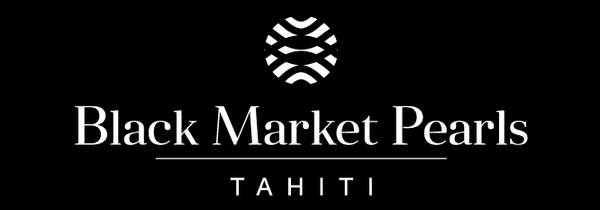Know Your Pearls
What is the Tahitian Pearl?
Precious by nature, Tahitian cultured pearls do differentiate from other pearls of Asian origin.
Misnamed Black Pearls, Tahitian cultured pearls can be found in a variety of shapes and colors, only nature can dictate. Grown in remote islands and atolls of French Polynesia, the Pinctada margaritifera oyster or mother of pearl will grow almost 2 years before reaching maturity and being nucleated. Another wait of 18 to 24 months is necessary before the Pinctada gives birth to this unique ocean gem.
Tahitian pearls perfectly fit in today’s market where consumers are looking for natural, organic, untouched products of fair trade origin.
Two major grading systems are in fairly widespread use: the AAA system (GIA) and the A-D system or Tahitian system less confusing to the layman.
Tahitian Pearl Classification.
Shape
-
The round pearl (R) is a perfect sphere, diameter variation rate is less than 2%.
-
The semi round pearl (SR) is slightly off round and difficult to differentiate by the untrained eye. Diameter variation is greater than 2% but less than 5%.
-
The oval pearl (OV), having at least one axis of symmetry it looks like a barrel or a rugby ball.
-
The drop (DR) is the rarest pearl; it is perfectly uniform on its axis and is sought off for pendants.
-
The pearl button (BT), exhibits one axis of rotation and looks like a crushed pearl. It is best used for rings as it wound set too high on the mounting.
-
The semi baroque pearl also exhibits one axis of rotation but presents a circled on top on bottom third of its surface.
-
The circled pearl (CL) is characterized by at least one concentric circle perpendicular to its axis of rotation located beyond the upper or lower third of the surface of the pearl regardless of its original shape.
-
The baroque pearl (BQ) is generally irregular and does not fit into the above categories and is a separate class.
Size
Most common sizes for Tahitian pearls range from 8mm to 14mm. Some Tahitian pearls are 16mm and very rarely over 18mm.
Luster
It is the deep inner glow of the pearl and its brilliance to human eye. For experts, luster is the most important indicator in evaluating quality because it separates the ordinary from the extraordinary. It is the very soul of this unique ocean gem that separate pearls from other gems.
The next factor is nacre coating that affects luster and the durability of the pearl. A thicker coating guarantees a better luster. Tahitian Government requires no less than 0.8 mm for pearls to qualify for export. Tahitian pearls usually range from 0.8 to 4 mm in thickness.
Surface and Skin Imperfection
It refers specifically to the abundance or absence of physical blemishes. Cultured pearls are grown by live oysters in natural surroundings, and there are numerous uncontrollable forces that affect the pearl surface. The fewer the natural markings or spots on the pearls visible surface, the more expensive the pearl.
-
Top gem Pearls (GIA AAA) are flawless, no imperfections and excellent luster make those pearls the rarest of the harvest. They are the most expensive.
-
A-quality pearls (GIA AA) are entirely smooth and with no more than one or two imperfections confined to less that 10 % of its surface. They also have very good luster and only represent 5% of the production. Their extreme rarity adds significantly to their cost.
-
B-quality pearls (GIA A+) are lightly blemished and imperfections are concentrated over less than a third of their surface. Good luster.
-
C-quality pearls (GIA A) are moderately blemished and can have light imperfection to no more than two thirds of their surface and no deep imperfection over half of their surface. Average luster.
-
D-quality pearls (GIA A1) show light imperfections over 60% of its surface with a tolerance of up to 20% of deep imperfections. Weak luster.
Tahitian pearls below D quality are not allowed to leave Tahiti and are systematically destroyed by the pearl inspection office.
Colors
Misnamed black pearls, Tahitian Pearls can display all the colors of the black lipped oyster shell. They come in a wide range of colors that range from black, grey, blue, green, and brown. But Tahitian Pearls also have the beautiful overtones of blue, pink, gold, silver, aubergine and peacock. There is absolutely no human intervention and pearl color reflects of the pristine colors of lagoons where they are born.
